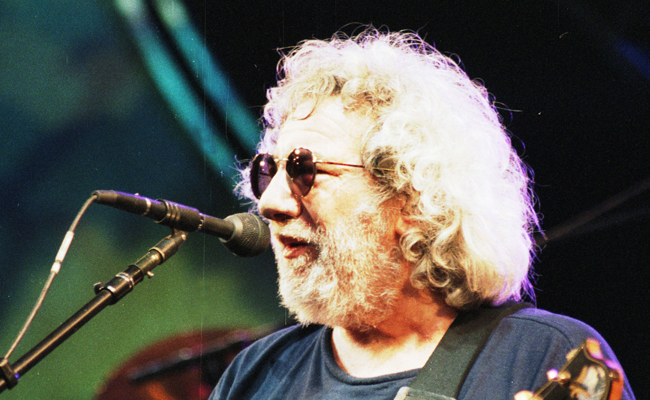
Twenty years ago Sunday, the legendary frontman for The Grateful Dead, Jerry Garcia, was found dead just eight days after his 53rd birthday. A vibrant and creative life earmarked by indulgence and excess, his decades-long struggle with narcotics and what The Grateful Dead referred to as their “endless tour” had caught up with him.
Born in San Francisco in 1942, he discovered music very early in life. Growing up as a self-described “hoodlum,” he’d start popping pills early in his teens before he started using marijuana at age 15. At the same time, he was applying himself creatively, taking art classes around the Bay Area. His love of music stayed with him, and by the age of 20 he was performing in various bluegrass and folk groups.
After trying LSD 1964, he said the drug “changed his life,” and credited it for freeing him from the conventions of folk music. His group at the time, Mother McCree’s Uptown Jug Champions (a band whose reputation involved LSD-laced Kool-Aid being present at their rehearsals) renamed themselves The Warlocks. Once they discovered another band was using that name, Garcia would pick a new one out of a Funk & Wagnall’s dictionary, becoming The Grateful Dead. Incidentally, the other band going by The Warlocks would later find fame as The Velvet Underground.
With the counter-culture in full swing, and its culture of the never-ending party, The Grateful Dead provided the soundtrack. Throughout their 30-year run, Garcia served as the band’s spiritual center, composing most of their best-known songs with lyricist Robert Hunter, and gaining a reputation for indulging in long, improvised guitar solos. The band would expand on this impromptu style, collectively riffing on seemingly endless jams that would captivate their fans across the more than 2,000 shows during their career.
After the band discovered cocaine on tour in 1973, Garcia had began smoking heroin two years later during one of the band’s few hiatuses. In the 10 years that followed, the drug use that went hand-in-hand with the subculture they’d inadvertently created had taken a significant toll on the band. Garcia had began gaining weight, and his performances were becoming more and more inconsistent. Drummer Bill Kreutzmann wrote in his book Deal: My Three Decades of Drumming, Dreams, and Drugs with the Grateful Dead that he “sometimes was so incapacitated he couldn’t function. He drooled on his microphone, fought nodding off and didn’t know where he was in a song and just hummed along.”
After years of watching Garcia unravel, by 1984 the band decided it was time to for an intervention. He agreed to check himself into a treatment facility, although he was arrested for drug possession not long after, which forced him to attend a drug diversion program, and by 1986 he was completely drug-free.
Despite his newfound sobriety, years of bad habits and weight gain caused him to slip into a diabetic coma for five days in July of that year. Once he regained consciousness, the impact was so severe that he had to spend several months re-learning how to play the guitar. After another five years of touring, he was once again worn down by the road, and returned to using narcotics in 1991. According to bassist Phil Lesh’s 2002 book Searching For The Sound: My Time With The Grateful Dead, the band was quick to intervene, holding a second intervention for him, and Garcia agreed to attend a methadone clinic.
Not long after their 1992 summer tour he became ill again, forcing the band to cancel their fall tour later that same year. Despite his efforts to lose weight, stop smoking (or at least reduce it significantly) and going vegetarian, his overall health and performance abilities were both in decline. He’d forget what song he was playing and often simply turn down the volume on his guitar altogether when playing. He was once again using narcotics, prompting him to check into the Betty Ford Center in July of 1995, just a few days after what would be their final performance with him at Soldier’s Field in Chicago. After two weeks there, he would continue his treatment at the Serenity Knolls clinic.
It was there that the years of touring and drug use became too much, and he suffered from a fatal heart attack on August 9. His longtime friend Joe McDonald (of Country Joe and The Fish), called his death “terrible,” adding, “he killed himself. Make no mistake.” Afterwards, many fans would find solace in the last song he’d play live, which was the seldom-performed “Box of Rain,” itself about saying a final goodbye to a longtime friend.






